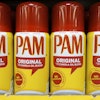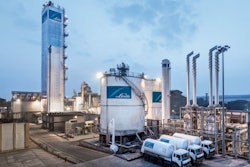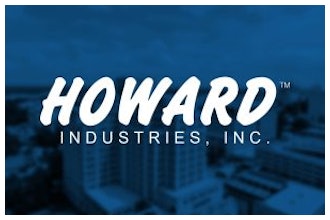“Those guys upstairs just don’t get it,” said a production manager at a Midwest manufacturing plant. “We had one of the best quarters in the company’s history, but they’re still on our backs about costs. With the new automation we have in place out in the shop, plus our reduced cycle times and improved quality, I don’t understand what they can find to complain about. It seems like they want us to be responsible for absorbing overhead for the entire company — but we have no control over those expenses or how the company incurs them.”
Sound familiar? If you’ve spent any time working in a manufacturing setting, you probably answered ‘yes’ to that question. This disconnect between the shop floor and the back office has posed numerous problems in the past and continues to generate conflict today.
While these debates in many operations often focus on costs, the accounting methods used by U.S. manufacturers to actually determine the cost of their products and services receives far less attention. Yet, some of the conflicts that surface between the shop floor and the back office link directly to how costs are calculated and the logic behind those calculation methods.
Five Primary Costing Methods Offer Varying Results
Today, there are five different approaches to costing that are most commonly found amongst U.S. manufacturers. Each of these approaches feature different data elements and calculations, so the costing information they generate about the exact same product, process or service differs. These approaches are:
- Traditional Transactional Cost Accounting Systems
- Activity-Based Costing
- Throughput-Based Accounting (often associated with Theory of Constraints-based manufacturing methodologies)
- Transfer Price-Based Costing (used in companies that ‘sell’ manufactured goods or assemblies between operating entities)
- Lean Manufacturing Accounting (normally associated with companies that utilize lean manufacturing techniques)
Amongst manufacturers, the Traditional Transactional Cost Accounting System is the most popular of these approaches in use today, and manufacturers have used it for decades. This popularity has been supported by the adoption of transactionally-based enterprise resource planning (ERP) systems in these companies.
Essentially, the differences between these cost accounting alternatives boil down to how overheads (direct and indirect) are absorbed into the cost calculation equation. However, in most modern manufacturing facilities, the proliferation of advanced manufacturing strategies and technologies has made it difficult to trace manufacturing overhead directly to any particular product or product class.
Industry professionals have frequently stated that Traditional cost systems may be detrimental to the successful use of a time-based manufacturing system such as Just-in-Time or Lean Manufacturing. Time-based manufacturing requires an emphasis on time measures, such as throughput time, inventory turnover, on-time shipments, new product introduction time, Takt time and production/process cycle times. Speed offers a unique competitive advantage, and cost accounting systems that fail to embed a time component as a basis of the information needed to manage the company limit the usefulness of this data and may impede the optimal management of the company’s operations.
As with our hypothetical production manager, the allocation of overhead costs on a ratio basis tied to direct labor content or labor dollars has forced operations managers to focus on the allocation of overhead costs assigned to the goods and services they produce — even though they have little to no direct control over these organizational expenditures. Traditional cost accounting practices tend to influence operations to overproduce since managers feel pressure to maximize standard labor hours to spread out and absorb allocated manufacturing overhead costs.
Resolving the Activity-Based Costing Conflict
Recently, Harvard professor Robert Kaplan and Steven Anderson, the chairman of Acorn Systems, introduced a new approach to resolve this managerial cost accounting dilemma. In a book titled, “Time-Driven Activity-Based Costing,” they promote a costing methodology that embeds time factors into the costing equation. It also simplifies some of the complexities inherent of Activity-Based Costing — which have stifled its use at most American companies.
Essentially, this time-based cost accounting approach assesses and allocates overhead costs to predefined durations of manufacturing cycle time — not to direct labor or materials consumed in the generation of a product or service. The less time consumed in a productive process, the lower the overhead value applied to a calculated cost and vice versa.
By focusing on the cost associated with throughput times to produce a given product, this approach adapts managerial costing to what matters most in a modern manufacturing environment — time efficiencies — as opposed to less meaningful measures such as overhead absorption rates versus direct labor.
Manufacturers that choose to use this approach need not worry about violating U.S. GAAP regulations or compromising public reporting that a financial accounting system must manage. In cases where it’s difficult to apply a direct cost variable to product costs (Ex: direct labor costs), manufacturers may want to include this direct cost component as part of the calculated overhead values assessed for a specific manufacturing time duration.
While this may seem like an appropriate accommodation when the ratio of that direct cost is limited relative to the overall combination of cost drivers involved in producing a product, manufacturers should exercise caution in applying this accommodation where this attribute isn’t present.
Time-Driven Activity-Based Costing in Action
In 2011, an article published in “Management Accounting Quarterly” described the story of a U.S. electronics manufacturer that realized its existing approach to cost accounting was hindering its ability to deal with increasing foreign competition and declining cash flows. To address this shortcoming, the organization initially attempted to convert to a simplified version of Activity-Based Costing. This yielded improvements in the information available to management, but it also raised concerns about the organizational burdens and long-term sustainability often associated with this costing methodology.
Working with David Stout of the Williamson College of Business Administration at Youngtown State University and Joseph Propori of CVS/Caremark, the organization’s management team decided to execute a pilot implementation of Time-Driven Activity-Based Costing to determine if it could yield improved management data comparable to what the firm had sustained with Activity-Based Costing — but without some of the negative ramifications. They saw extremely positive results from this pilot. Adoption of Time-Driven Activity-Based Costing offered the desired information with a lower overall burden on the organization.
While there’s no one-size-fits all approach to costing, manufacturers should take a close look at their current method to ensure it generates data that enables management to drive the business forward. If it doesn’t, they should consider another approach — particularly one that uses time efficiencies as a key control element. As manufacturing shows signs of strong growth in 2015, speed may be the difference between remaining stagnant and racing ahead of the competition.
Jack Moran is Director of Manufacturing Solutions at Sikich LLP.
To read more manufacturing and technology news, sign up for our newsletter. You can also follow Manufacturing Business Technology on Twitter @MBTwebsite.























